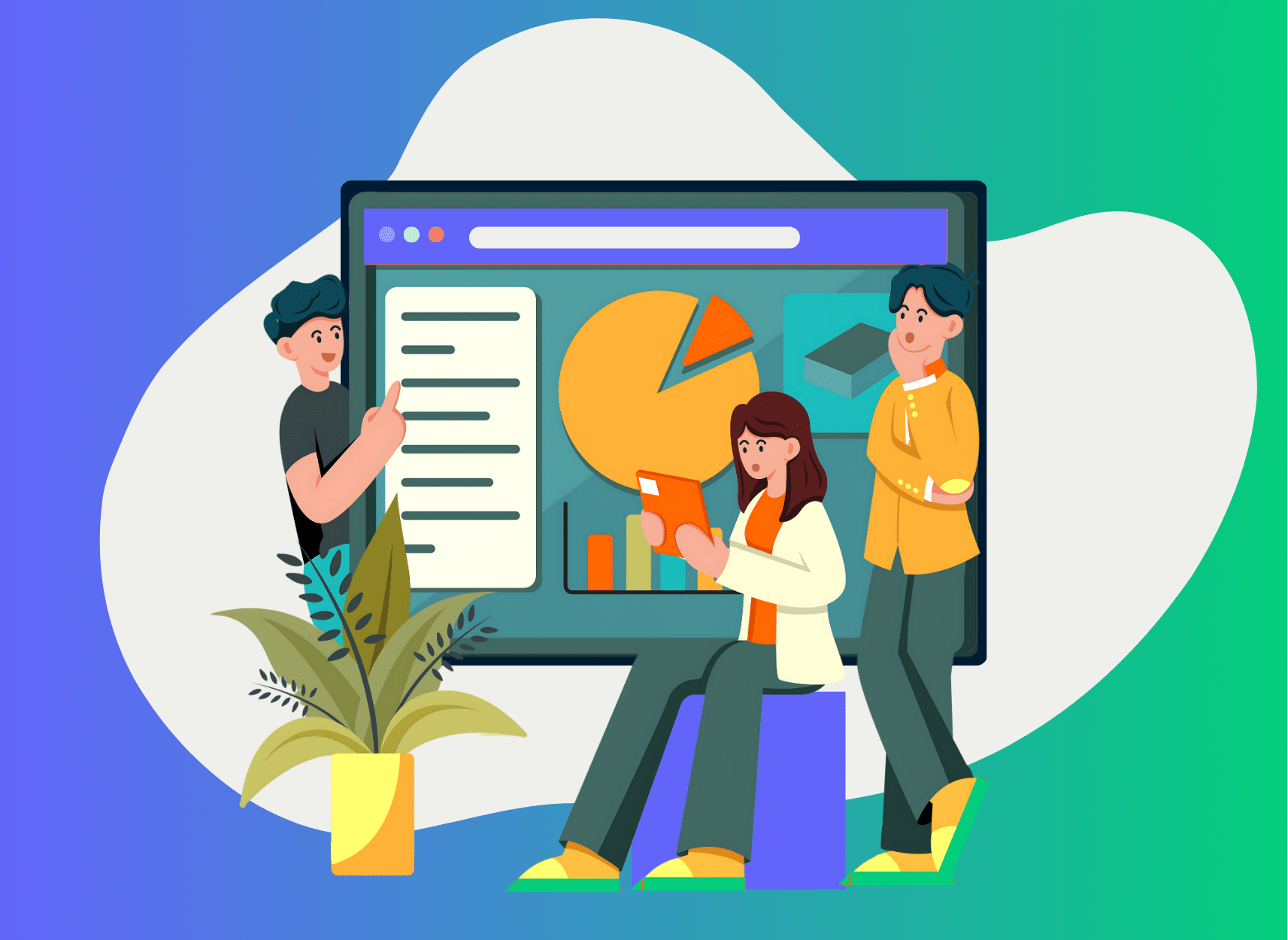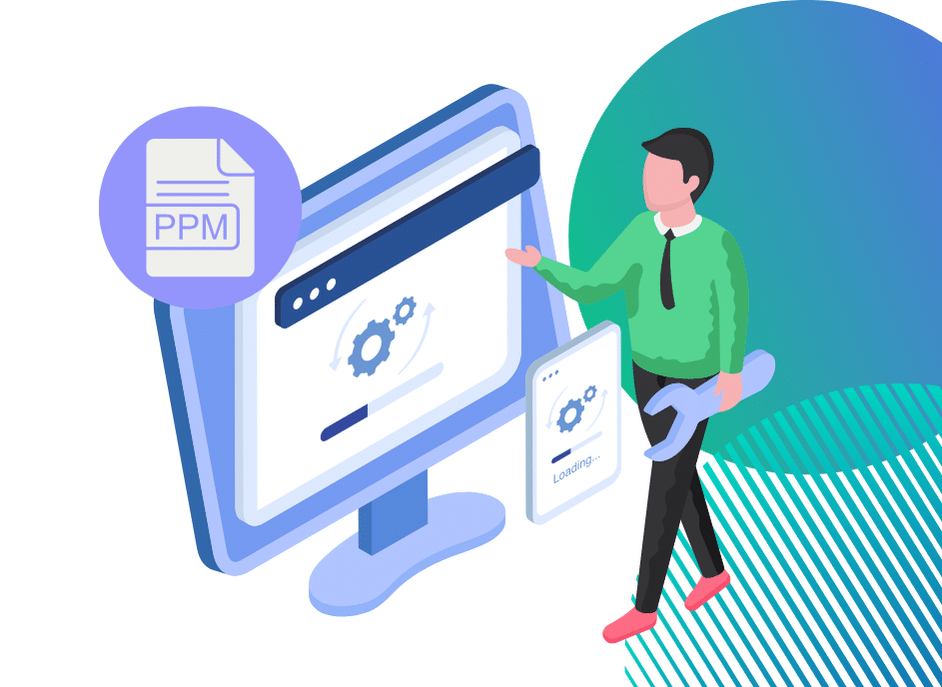The Best Project Tracking Tools in 2025 (Comparison)
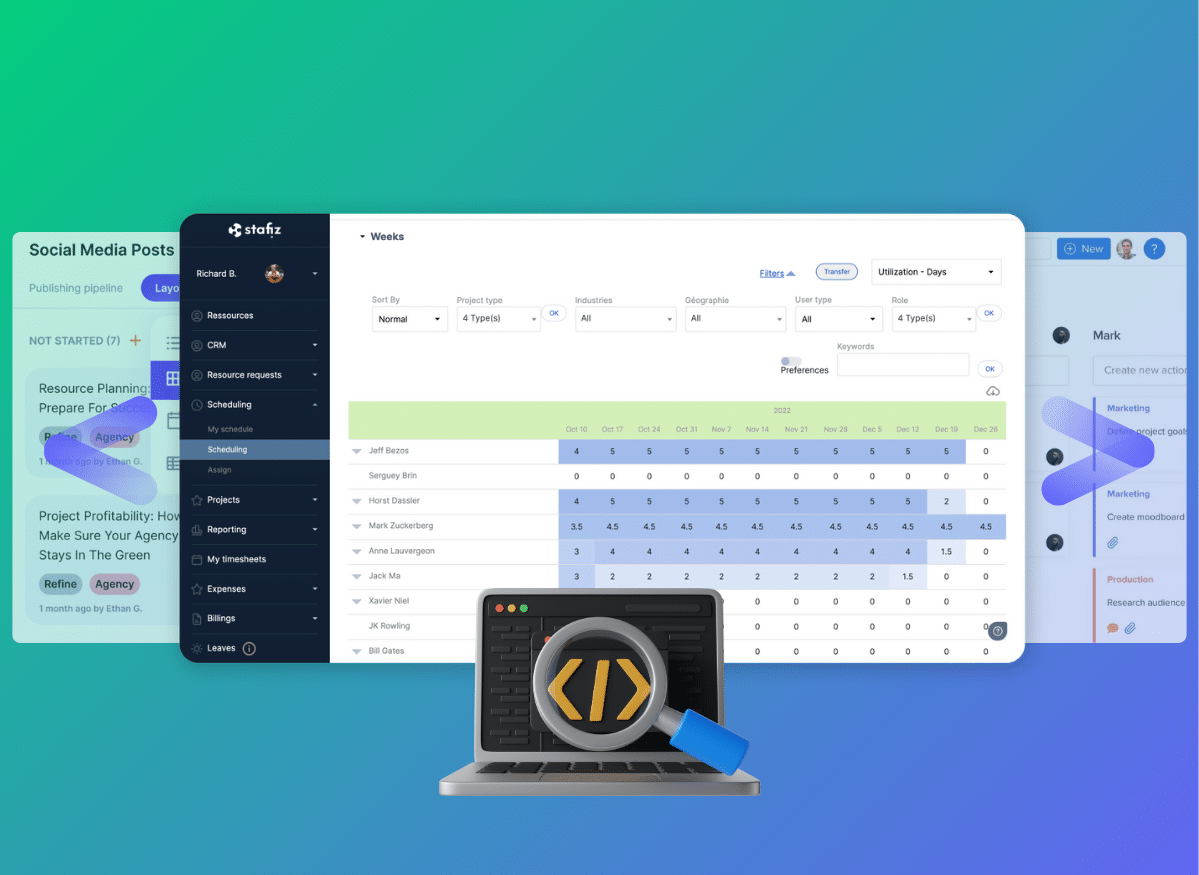
There is no "best" universal project tracking tool, but rather solutions adapted to your sector of activity : Jira for IT development, Adobe Workfront for creative agencies, and Stafiz for service companies.
Choosing the best project tracking software depends first and foremost on your business priorities. Don't want to waste any more time in unnecessary meetings? Do you want to optimize the margins of your project portfolio? Do you need to anticipate your resource needs in real time? Each problem can find its ideal tool.
This article offers a classification by functional orientation and by sector of activity. The objective: to help you identify the solution that best fits your processes, without multiplying software or dispersing your data.
Project Tracking Tools Ranked By Functional Criteria
Choosing collaborative project monitoring software depends above all on your priorities: collaboration, multi-project management or financial management.
Project monitoring tools for collaborative monitoring
Notion
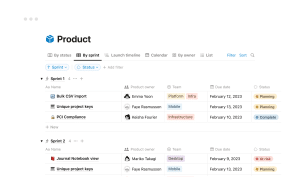
Notion is an all-in-one workspace for centralizing documents, notes, and tasks.
Ideal as a project monitoring software for SMEs or for internal projects, it quickly shows its limits for budget and profitability in real time.
Hive

Hive offers Kanban, Gantt, Timeline, and Portfolio views with real-time dashboards. Its advanced features (time, resourcing, analytics) require paid modules, making it more expensive than integrated platforms like Stafiz or Productive.io.
Freedcamp
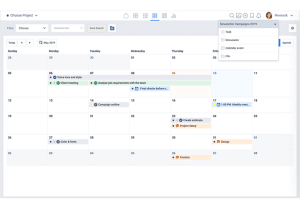
Freedcamp seduces with its freemium offer with unlimited projects, ideal for small teams. It includes tracking milestones, deadlines, agenda, time, and integrated messaging, but remains limited for complex needs.
Monitoring tools focused on financial and resource management
As projects become more complex, multi-project project tracking is no longer limited to tasks or deliverables. However, many service companies (IT Services, consulting firms, agencies, HR firms, integrators...) still use scattered tools: Excel for times, a CRM for pre-sales, another software for purchases and expenses... This fragmentation of information makes it difficult to monitor the budget in real time.
In addition, there are the hazards: changes in perimeter requested by the client, addition of tasks generating new costs, departures or reassignment of talent, evolution of ADR Internal. Without a forecast view or dedicated alerts, diversions are spotted too late.
Without a real-time project tracking tool, how can you make a decision or react quickly?
Stafiz, the all-in-one control solution
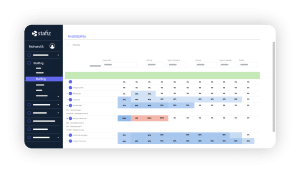
Stafiz is an all-in-one solution organized in 3 bricks: Management of the resource planning, project management and activity management.
In terms of project monitoring, Stafiz allows:
- real-time monitoring planned vs. completed (charges, costs, deliverables);
- complete visibility on the progress and the forecast at the end of the project ;
- an alert system to quickly detect project abuses ;
- Integrated financial management: margins, invoicing, cash flow.
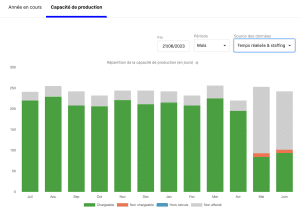
Comparison of the variances between planned and actual times in Stafiz
Stafiz offers other features for managing the resource planning and financial monitoring:
- one resource planning advanced and automated with profile/project matching;
- of the meadow-resource planning from the commercial opportunity to anticipate needs;
- Suggestions and scenarios to optimize talent allocation.
- the follow-up of the utilization rate and time spent analysis to maximize productivity;
- monitoring of the provisional progress to adjust during the mission;
- Integrated financial management: margins, invoicing, cash flow.
Thanks to its interactive dashboards, Stafiz gives service companies full visibility into their performance and profitability, while facilitating quick and documented decision-making.
Productive.io
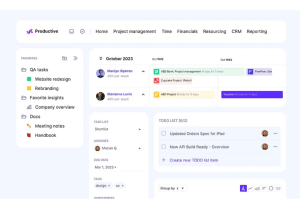
⚙️ Key features
- Time tracking.
- Calculation of project profitability and margins.
- Monitoring of the provisional vs. actual budget.
- Integrated invoicing.
Productive.io is ideal for agencies and consulting firms, as it connects time spent, budgets, and invoicing in a single flow.
Accelo

⚙️ Key features
- Complete workflow from quote to cash.
- Integrated customer billing and revenue forecasting.
- Project monitoring connected to the CRM for customer-oriented management.
This PSA software is suitable for service companies wishing to automate their project lifecycle. American software with very high prices, its adoption by a European company will be limited.
Celoxis
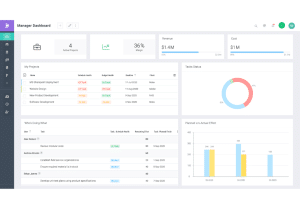
⚙️ Key features
- Advanced reporting and customizable dashboards.
- Tracking projected vs. actual margins, profits, and revenue.
- Centralized multi-project and portfolio management.
- Real-time time tracking and revenue planning.
Its advanced reporting and margin/profit management make it a tool of choice for CFOs and PMOs looking to optimize profitability.
Which Project Monitoring Software To Choose According To Your Industry?
Best Project Tracking Software for Consulting
Consulting firms must optimize the resource planning and profitability on a variety of assignments: on a time-owned, fixed-price basis or spread over several clients.
💻 Needs
- Follow-up of the resource planning (load, availability, forecasts, intercontract).
- Follow-up of the planned vs realized (time, expenses, deliverables).
- Financial management and profitability : margins, invoicing, cash flow.
- Multi-project reporting (per consultant, per BU, per client).
Best Project Tracking Software for Agencies
Agencies have to juggle multiple clients, campaigns with tight deadlines, and creative production that generates a lot of back and forth. They must keep control of budgets and margins without getting bogged down in administration.
💻Needs
- Track budgets by campaign and by customer.
- Management of creative tasks and deliverables (versions, approval, deadlines).
- Invoicing and follow-up of quotes vs. realized.
- Visibility into customer profitability and team occupancy rates.
Here is our fine selection of project monitoring tools adapted to agencies.
Adobe Workfront

⚙️ Key features
- Follow-up of requests, tasks, creative deliverables.
- Management of revisions and validations.
- Time spent and creative team tracking.
Designed for high-speed creative workflows, it integrates with the Adobe suite, centralizes reviews, approvals and customer feedback, and tracks the time spent by creative teams.
Synergist
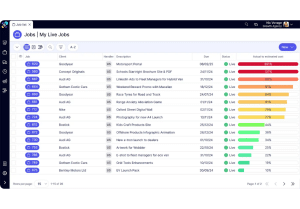
⚙️ Key features
- Financial and margin monitoring by client/project.
- Multi-project agency management.
- Employee efficiency reports.
A UK software that targets profitability-oriented agencies, it closely tracks quote/actual variances, occupancy rate and provides financial reports by client and employee to optimize resource allocation.
➡️ Alternative tools : Workamajig, Stafiz.
Best IT Project Tracking Software
The IT Services and development companies have to juggle between Talent sourcing, technical projects and optimization of utilization rate. Their priority: to reduce inter-contracting, maximize profitability and guarantee customer satisfaction through rigorous monitoring of tickets and deliverables.
💻 Needs
- Follow-up of billable utilization rate and occupancy rate to optimize the intercontract.
- Support and ticket management.
- Tracking tasks, deliverables and progress.
Jira
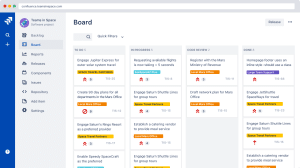
⚙️ Key features
- Backlog management and task organization.
- Agile tracking via sprints and burndown charts.
- Ticket and bug management.
- Project monitoring dashboards.
A benchmark for agile development, Jira's power lies in its ability to structure work in agile mode.
Stafiz for IT Services
⚙️ Key features
- Search engine for profiles by skills, experience or role, CV integrations.
- Meadow-resource planning from the pre-sales stage to feed commercial proposals.
- Management of CRAs (automatic reminders of entry, and provisional vision).
- Real-time profitability monitoring by mission, team or client.
- Automated invoicing (preparation, automatic reminders of unpaid invoices).
- Control of invoiced vs. completed production.
- Native integrations & APIs.
Best Project Tracking Software for Architectural Firms
Architectural firms manage long and phased projects (design, studies, construction sites) where each milestone has an impact on the budget and schedule.
💻Needs
- Monitoring of the project phases (design, studies, construction site).
- Monitoring of budgets and progress by phase.
- Tracking billable vs. non-billable hours.
- Financial management and margins per client/project.
BQE Core
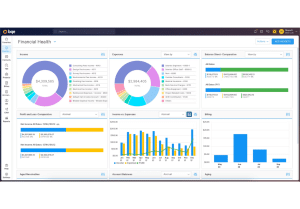
⚙️ Key features
- Track time, budgets, and resources by project phase.
- Integrated billing and collection management.
- Detailed analytical reports (profitability by project, client, employee).
BQE Core helps firms connect operational monitoring to financial performance. Managers have a clear view of the profitability of projects and can better arbitrate between billable and non-billable.
Archdesk
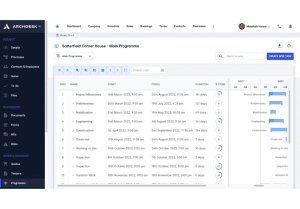
⚙️ Key features
- Complete follow-up of architecture and construction projects.
- Control of costs related to materials, labor and subcontractors.
- Management of key milestones: plans, authorizations, execution phases.
Designed for architecture and construction, it tracks in real time the milestones, costs and resources of the site (plans, materials, labour). It makes it possible to anticipate budgetary drifts and to keep costs under control.
➡️ Alternative tools : Monograph, Deltek.
Best Project Tracking Software for Field Industries
In construction and industry, projects (construction sites, factories, pipelines, etc.) are complex, with many milestones, many regulatory constraints and significant CAPEX/OPEX budgets.
💻 Needs
- Follow-up of milestones and field deliverables.
- Quality monitoring and compliance (controls, audits).
- CAPEX/OPEX cost and budget monitoring.
- Mobile collaboration for on-site teams.
Procore

⚙️ Key features
- Monitoring of construction sites with management of milestones and deliverables.
- Compliance and quality monitoring tools.
- Real-time collaboration in the field via mobile apps.
Designed for construction, it centralizes site data, tracks milestones, deliverables, compliance and quality, and facilitates real-time collaboration between the field and offices.
EcoSys (Hexagon)
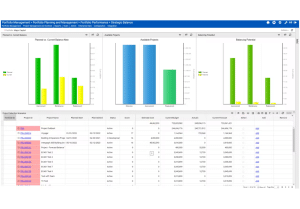
⚙️ Key features
- Detailed monitoring of CAPEX/OPEX costs and budgets.
- Planning and management of major industrial projects.
- Integration with engineering and execution data.
EcoSys is aimed at engineering and infrastructure players: refineries, pipelines, power plants, etc. By offering advanced control of costs and schedules, it helps companies manage complex projects with a consolidated financial vision.
➡️ Alternative tools : Autodesk Construction Cloud, Fieldwire, Aconex.
The best project tracking software for professional services
Professional services include software publishers, integrators and technology consulting firms. They need to balance the load on teams, track costs, and anticipate recurring revenue.
💻 Needs
- Monitoring of planned vs. actual costs by project.
- Asset Tracking (resource planning multi-project).
- Recurring revenue management (SaaS, T&M, package).
- Monitoring of project margins and cashflow forecasts.
Replicon PSA
![]()
⚙️ Key features
- Time tracking and team scheduling.
- Multi-team project follow-up with financial consolidation.
- Management of invoicing, margins and HR compliance.
Replicon PSA stands out for its real-time time and cost management, offering clear consolidation for service companies.
Atera
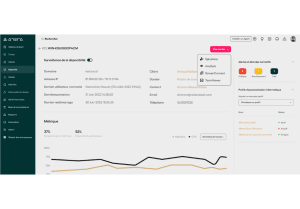
⚙️ Key features
- IT project tracking, ticket management, and integrated invoicing.
- Tracking SLAs (Service Level Agreements) and billable expenses.
- Suitable for managed services companies (MSPs).
Specialized for MSPs, it combines IT project monitoring, tickets, invoicing and SLAs to maintain quality of service and profitability.
➡️ Alternative tools : Autodesk Construction Cloud, Fieldwire, Aconex.
How to choose a project tracking tool?
The right tool depends first and foremost on your priorities: workload, advancement, finances, collaboration or organizational complexity. Rather than choosing the most "complete" on paper, it's essential to identify the features that will have a direct impact on your margins and efficiency.
Here are the key criteria to look at.
Load-related features
Project load tracking software ensures that projects have the right resources at the right time.
⚙️ Features to look for
- Difference between the planned and actual workload.
- Adjustments during the project to avoid overloads.
- Optimization of the billable utilization rate and occupancy rate monitoring.
- Management of evolving availability (taking into account CRM opportunities, new projects, absences).
Monitoring the progress of the project
Project progress monitoring software is essential to reassure customers, validate key steps and avoid deviations.
⚙️ Features to look for
- Follow-up of assigned and completed tasks.
- Calculation of the overall percentage of progress.
- Follow-up of deliverables with customer validation.
- Meeting deadlines and managing milestones.
Financial monitoring of the project
Financial management ensures that the budget is respected, avoids project deviations and remains profitable.
⚙️ Features to look for
- Cost tracking (internal and external).
- Expense management (purchasing, subcontracting, travel).
- Forecast to anticipate the risks of budget deviation.
- Cashflow vision: margins, invoicing, cash flow.
Collaborative features
On the collaboration side, some features are taken for granted. However, not all tools are equal from a collaborative point of view.
⚙️ Features to look for
- Management of access rights and visibility levels;
- Centralized sharing of key information;
- Resource allocation and reallocation;
- Multi-project management and PPM (Project Portfolio Management);
- Comments, mentions, and notifications.
Needs according to organizational complexity
The more complex the organization of a project, the more advanced structuring and consolidation functions the monitoring tool must integrate.
⚙️ Features to look for
- Hierarchical management: programs, projects and sub-projects.
- Data segmentation and consolidation.
- Time recording (with adapted granularity).
- Breakdown and reallocation of turnover by BU or team.
Which Project Management Tool To Choose In 2025?
The needs of every business change dramatically depending on their size, industry, and feature needs. A consulting firm does not manage the same issues as a creative agency or a IT Services. Traditional tools (Excel, collaborative solutions) often end up showing their limits: they do not provide a forecasting vision, precise financial monitoring, or the ability to adjust the resource planning in real time.
The key is therefore to start from your main need: reduction of the intercontract, respect of deadlines, increased profitability, regulatory compliance... In short: there is no single winner, but a tool tailored to your industry and priorities. The right choice is one that simplifies your processes while improving your profitability and visibility.
Questions:
A project monitoring tool goes beyond simple task management: it allows you to control execution, track actual time and expenses, anticipate budget deviations and analyze profitability. It transforms planning into operational and financial management.
Project management software focuses on planning and organizing: defining tasks, assigning resources, structuring the schedule. The project monitoring software then intervenes, during the execution: it controls the actual progress, monitors the expenses, analyzes the margins and ensures that the budget and deadlines are respected.
There are several types of monitoring: load monitoring (occupancy rate, resource planning), progress monitoring (tasks, milestones, deliverables), financial monitoring (costs, margins, cash flow) and quality/compliance monitoring. Depending on the activity, software can cover a single aspect or offer a complete multi-project vision.
Project monitoring software is focused on the execution and control of projects: tasks, expenses, margins, deliverables. PSA (Professional Services Automation) software goes further by integrating the complete cycle of service companies: CRM, resource planning, invoicing, financial and forecasting management, often in a single platform.
